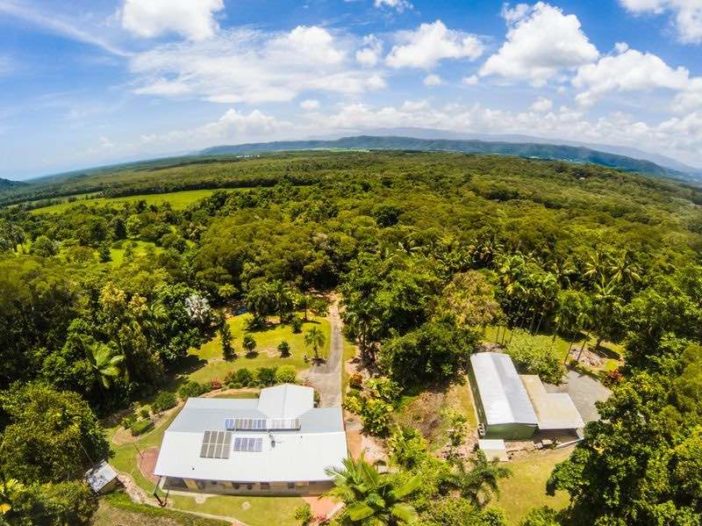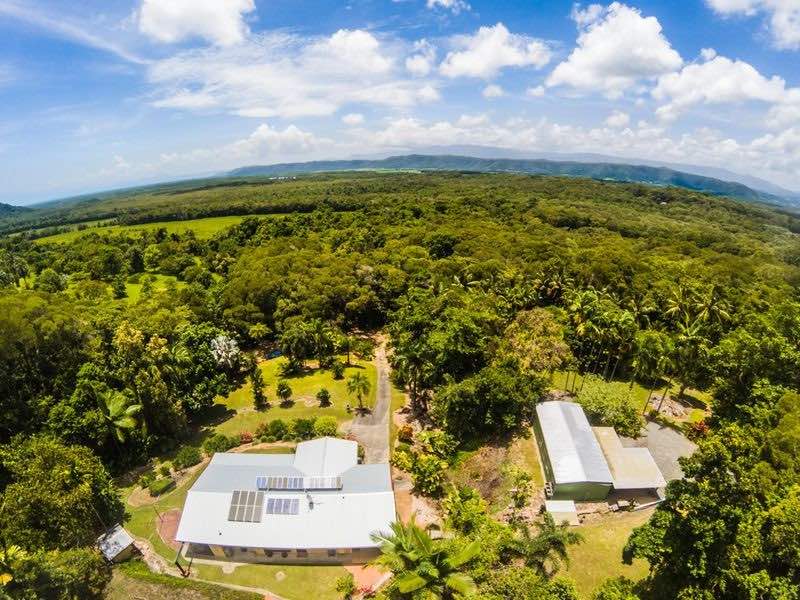

Queensland’s world heritage-listed Daintree region could be the site of an Australian-first solar power to hydrogen gas-based microgrid, with newly announced federal government funding tipped to help make the 100 per cent renewable project shovel ready.
As we reported here, the Morrison government last week unveiled plans to underwrite the establishment of up to 50 “affordable and reliable” renewable microgrids around the country, via a new $50.4 million purpose-built fund.
In a statement, federal energy minister Angus Taylor singled out the Daintree project as one which the government hoped would be helped to investment stage by the new fund, and that the assistance would help foster new forms of microgrid “ownership.”
Federal member for Leichardt, Warren Entsch, described the news of the fund as “absolutely fantastic” for the prospects of the 100 per cent renewables Daintree project, which he said he “had no doubt” would get the green light.
According to Russell O’Doherty, president of Daintree Renewable Energy Inc, the proposed project would use cutting edge hydrogen technology that would see residents feed power from their rooftop solar into a reticulated microgrid and get credits for their power.
“This power will be used to help power the hydrogen cell; the hydrogen gas produced will be collected and stored and used to fuel large scale generators. The only by product of this system is hot water,” he told local paper Newsport.
“The community looks forward to the day when the project actually starts and the cables are in the ground, the rest of the infrastructure is in place, and we can flick a switch like everyone else,” he said.
Indeed, the community-based effort to address the Daintree community’s power problems has been a work in progress for decades now – as we reported here around two years ago.
The rainforest-based community is cut off from the Ergon network, and with solar not an option for many due to shading, most residents and businesses have been reliant on inefficient, costly and high polluting diesel fuel generators coupled with battery storage – usually lead-acid.
A campaign led by the Daintree Rainforest Power Committee has – for around 30 years now – sought an alternative to that status-quo, and in 2017, ARENA commissioned a report to identify a range of options, including analysis of current state technologies (traditional and renewable) and analysis of system and energy load data.
According to Volt Advisory Services Richard Schoenemann – who worked on the ARENA project alongside the Daintree Power Committee, Phillip Koeghan from Sunverge – it was decided after “extensive analysis” that a full community “power to gas” microgrid was the best option.
This was because it was found to have a better cost per unit of energy than the other options assessed, was optional for residents to connect, but did not exclude any residents, while offering those who wanted it a reliable supply and freedom from the responsibility of managing their power supply.
The proposal was also favoured for its capped tariff arrangements, similar to those enjoyed by others in the state, including the potential to feed in their own solar to the community grid.
The environmental impact of the project was also considered to be a benefit, with cabling proposed to go under existing infrastructure so that it did not require the disturbance of any of the world heritage listed rainforest
All told, Schoenemann told One Step this week, the proposed project provided a pathway to a 100 per cent renewable community grid that used solar to gas (Hydrogen) storage as a means of storing excess solar through long periods of seasonality.
It particularly suited the Daintree, he said, because the community had around a 6MW peak, while the region had 120MW of “abundant” solar potential, if you could store it – although that resource was not evenly shared by all businesses and residents, which is to be expected in a dense rainforest.
“The technology has the potential to store excess solar energy at a competitive levellised cost of energy, and provide fast response, thus providing a potential solution to many challenges associated with high penetration of renewables in microgrid environments,” Schoenemann said.
“Fundamentally, we are seeking to explore feasible options for storing excess solar energy from rooftops and farms through longer periods of intermittent solar generation to support high renewable penetration in microgrids.
“Implementing an underground microgrid under existing roads and easements would allow excess solar from cleared areas to be shared with load centres who do not have adequate solar potential.
Entsch – who is a big supporter of the renewable microgrid proposal – also notes that a solar to gas solution would offset more than 10 million litres of diesel that is currently burnt annually to power generators.
“Australians would be horrified to learn that more than 10 million litres of diesel is burnt annually in the World-Heritage listed Daintree to power generators,” he said in a statement.
“This is totally unacceptable. It is encouraging to see the federal government identify and support projects like the Daintree renewable-energy microgrid.”
But there is a way for the project to go yet before it is, as Entsch puts it, “shovel ready.”
For starters, not everyone in the region is on-side with the project – some, says Shoenemann, are committed off-griders who just don’t want grid-connected power.
And local press has reported that the Douglas Shire Sustainability Group (DSSG) “remains deeply concerned” that a revised development proposal pushing for reticulated power north of the Daintree, would cause long term damage to the environment and tourism.
“DSSG President, Didge McDonald, said the new push for reticulated power ignores cheaper, lower impact, greener options and instead seems driven by a desire to encourage development,” a Newsport report said this week.
Schoenemann, meanwhile, remains hopeful, although he is also mindful that there is a lot of work to be done on matters around governance and ownership of the mircrogrid.
“We are very encouraged by the recent federal announcement as we see real potential to build cleaner, more affordable, more resilient remote community infrastructure,” he told One Step.
“However, to unlock the microgrid potential requires investigating many unresolved questions around viability, technology, regulation, commercials, governance and ownership, particularly at 100 per cent renewable penetration.”

Sophie is editor of One Step Off The Grid and editor of its sister site, Renew Economy. Sophie has been writing about clean energy for more than a decade.

